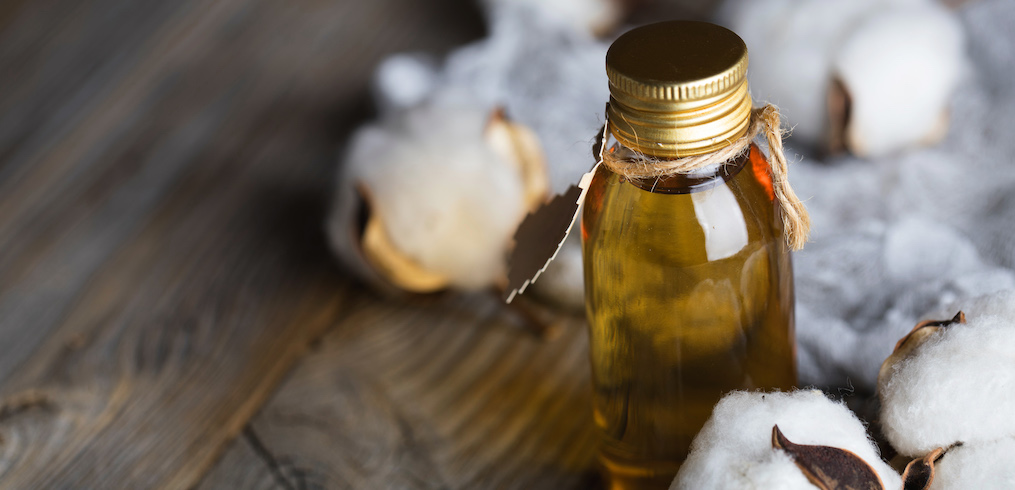
When properly prepared, cottonseed can provide a high-energy, low-cost protein supplement in animal feed. Despite its many benefits as a source of fat and protein, cottonseed also comes with challenges. A natural toxin called gossypol in cottonseed meal can be harmful and even lethal to some animals, which could prevent livestock producers from using it at all.
Cottonseed’s value as feedstock depends on a processor’s ability to effectively treat cottonseed meal—capturing its nutritional value while destroying the anti-nutritional toxins.
What is gossypol?
Gossypol is a crystalline compound produced by the pigment glands in cotton plants. Located throughout the stems, leaves, and buds, but concentrated in the seeds, these glands secrete gossypol as a natural toxin to protect the plant from insect damage.
Although agronomists have developed “glandless” varieties of cotton in attempts to reduce the amount of gossypol in cottonseed meal, these modified varieties are more vulnerable to insect attacks. Without a naturally occurring pest repellent, these low-gossypol cotton varieties require high levels of insecticides to produce a strong yield.
While gossypol plays a critical role in cotton cultivation, it poses problems further down the food chain. Unfortunately, cotton’s innate pest resistance also makes it harmful for other animals to consume, unless the toxic gossypol is deactivated. Since it’s only toxic in its free state, binding the free gossypol to a solid protein can essentially detoxify the compound.
Need assistance with your oilseed equipment now?
Do not hesitate to call us at 1(800) 336-4730 or use our contact form.
Gossypol toxicity in livestock
While various gossypol levels affect each species differently, cottonseed consumption has its limits. Monogastric digestive systems can’t handle much gossypol at all before developing signs of toxicity. That means animals with single-chambered stomachs, such as swine and poultry, can’t consume high levels of cottonseed meal in their rations.
Ruminant animals, like sheep and cattle, on the other hand, can handle slightly higher levels of gossypol. A mature cow’s multi-chambered digestive system detoxifies some of the gossypol through microbial fermentation—binding the harmful free-form gossypol with proteins to prevent the toxins from being absorbed.
Even ruminant animals, however, can develop cumulative issues after consuming high levels of gossypol over time. Eventually, gossypol toxicity may cause:
• Decreased feed intake resulting in weight loss.
• Lung and liver lesions preceded by labored breathing.
• Cardiac irregularities and heart failure.
• Infertility and other reproductive problems.
Many of these health impairments can be reversed by eliminating cottonseed from the animal’s diet. But in severe cases, these damages could be fatal—causing serious economic losses to livestock producers who depend on healthy animals for profit.
To mitigate the effects of gossypol toxicity in livestock, some famers supplement their animal rations with iron or dilute the cottonseed meal with other ingredients. However, this approach can be costly. Controlling gossypol intake really begins with proper cottonseed processing.
Read more: Using Heat to Reduce Trypsin Inhibitors and Urease in Soybeans
Controlling gossypol in cottonseed meal
Certain processing methods can disable the harmful gossypol in cottonseed meal. Treating cottonseed with heat forces gossypol to bind with proteins, which eliminates its toxic effects. However, this can also reduce protein availability in the meal. To retain the nutritional benefits of this material while reducing the toxicity, processors must strike a fine balance using high-quality processing equipment.
Processing cottonseed with an extruder like the Anderson Dox™ achieves this balancing act by mechanically shearing, cooking, and drying the seeds before extraction. This high-pressure cooking process ruptures the gossypol glands, binding the material to the meal while deactivating the free toxins. Extrusion also ruptures the cottonseed cells, making oil more readily available for extraction.
After extrusion, cooked and dried cottonseed heads into a screw press like the Anderson Expeller®, which uses friction-generated heat to convert more of the free gossypol while pressing the oil from the solid meal.
Properly processed cottonseed oil appears pure black in color, but a reddish hue could indicate high levels of gossypol remaining in free form after extraction rather than binding to the meal. If left untreated, this red pigmentation could incur higher oil refining costs in attempts to remove the active gossypol.
Processing cottonseed with a combination of extrusion cooking and Expeller® pressing can reduce the concentration of gossypol in cottonseed meal and oil, allowing processors to capture the most valuable components of the plant.
To learn more about processing cottonseed meal to maximize its nutritional benefits, contact the extrusion and extraction experts at Anderson International.